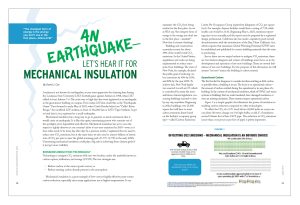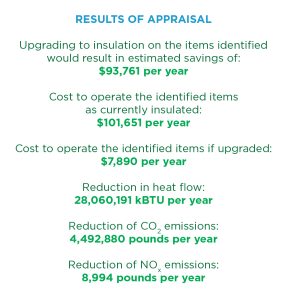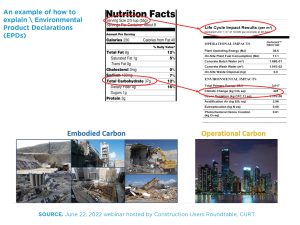An Earthquake—Let’s Hear it for Mechanical Insulation
Louisiana is not known for earthquakes, so you must appreciate the cheering fans during the Louisiana State University (LSU) football game against Auburn in 1988, when LSU rallied to beat Auburn 7-6. The noise was so high that the event registered as an earthquake in the geosciences building on campus. Even today, LSU fans recall this as the “Earthquake Game.” Fast-forward to early May of 2022, when Garth Brooks belted out “Callin’ Baton Rouge,” the unofficial LSU anthem, in front of 102,000 fans at LSU’s Tiger Stadium. It got so loud that it, too, registered as a small earthquake.
Mechanical insulation has a long way to go to generate so much excitement that it would cause an earthquake. It is like that quiet, unassuming person who remains out of the spotlight, yet is dependable and effective. Mechanical insulation has yet to earn the respect it rightly deserves in our country’s drive to net-zero emissions by 2050—even as it does what needs to be done day after day! In a previous article, I explained that we need to reduce new CO2 emissions, but at the same time, we also need to remove billions of metric tons of CO2 per year to meet the global warming goal of 1.5°C (2.7°F) in the early 2050s. Unassuming mechanical insulation could play a big role in achieving these climate goals if it just got more visibility.
Emissions Reduction Technology
Technology to mitigate CO2 emissions falls into two buckets, under the umbrella known as carbon capture, utilization, and storage (CCUS). The two strategies are:
- Reduce carbon at the source (point source), or
- Reduce existing carbon already present in the atmosphere.
Mechanical insulation is a great example of low-cost yet highly effective point-source carbon reduction, especially since many applications are at higher temperatures. It can minimize the CO2 from being emitted in the first place. As we at NIA say, “the cheapest form of energy is the energy you don’t use in the first place—insulate!” Now that is seismic thinking!
Building and construction currently account for about 39% of the world’s total CO2 emissions. In the United States, regulations and codes are being implemented to reduce emissions from buildings. The state of New York, for example, declared the public goal of reducing carbon emissions by 40% by 2030, and 80% by the year 2050. To achieve this, New York legislators enacted Local Law 97, which is considered by many the most ambitious climate legislation concerning buildings enacted to date by any city, anywhere. Beginning in 2024, buildings over 25,000 square feet will have to meet carbon emissions limits based on the facility’s occupancy group type—called Carbon Emissions Limits Per Occupancy Group (equivalent kilograms of CO2 per square foot). For example, daycare facilities would have a rating of 7.58, while health care would be 23.81. Beginning May 1, 2025, emissions reporting must occur annually, and the report must be prepared by a registered design professional. California also has made a regulatory push toward decarbonization with the introduction of the Buy Clean California Act, which requires that maximum Global Warming Potential (GWP) rates be established and published for certain building materials that the state is purchasing.
Just as there are two major buckets to mitigate CO2 emissions, there are two buckets designers and owners of buildings must focus on in the development and operation of net-zero buildings. There are several definitions of net-zero buildings. For the purposes of this discussion, we will assume “net zero” means the building is carbon neutral.
Operational Carbon
The first bucket for designers to consider involves emitting as little carbon as possible when a building is in use. The focus is on operational carbon—the amount of carbon emitted during the operational or in-use phase of a building. In the context of mechanical insulation, think of HVAC and steam systems in buildings that are under insulated, have damaged insulation, or even are missing insulation. These systems impact operational carbon.
Figure 1 is a simple graphic that illustrates the power of insulation in enabling carbon reduction compared to other technologies.
To offset the CO2 of a 2.7L truck driven 20,000 miles in a year, one can plant 360 trees, change out 310 light bulbs, or add 2” of insulation around 8 linear feet of bare 350°F pipe. The reduction in CO2 emissions (more than a ton per year per foot of pipe) is pretty impressive.
Not impressive enough? NIA member Fit Tight Covers from Indiana recently documented how an energy appraisal helped one of its clients greatly reduce CO2 emissions as part of their 2025 carbon reduction goals. After upgrading their mechanical insulation, analysis showed that one plant alone can save approximately 4.5 million pounds of CO2 per year, while at the same time reducing annual operational energy costs from $102,000 to $8,000. The CO2 savings at this one plant equate to the carbon sequestered by 4,244 acres of U.S. forests in 1 year.
Another NIA member, Shannon Global Energy Solutions, out of New York (see page 9), documented savings on a 350°F steam system with only 48 fittings. By adding just 1.5” of removable/reusable insulation covers to areas such as valves, steam drums, flanges, and strainers, Shannon showed a 10-month payback on a $31,000 installed job. Better yet, the CO2 savings from adding the insulation to these 48 areas was 444 tons. Doing a quick calculation, this comes to savings of 14 tons of CO2 per $1,000 investment. Mechanical insulation is economically saving energy and the planet!
Now consider these additional attributes of insulation: It is proven; it is made in America and readily available; it pays for itself, sometimes in a few months; it protects personnel from hot pipes and equipment; it contributes to better air quality and quieter offices for commercial buildings; and it keeps on working, whether or not you have power. Insulation is considered a passive device, requiring no utilities or maintenance over its useful life. Again, that is seismic!
Embodied Carbon
The other bucket for designers to consider is the embodied carbon of the products used to create the building, as well as the construction of the structure itself. It is reported that embodied carbon will be responsible for nearly half of total new construction emissions between now and 2050. The introduction of zero-energy design goals makes buildings more energy efficient and reduces the rate of carbon emissions once the building is in operation.
Looking at the carbon emissions associated with a building’s embodied carbon, designers can understand the impact of each building material by referring to Environmental Product Declarations (EPDs) from manufacturers of materials that have EPDs. An EPD is the main document that quantifies the amount of potential environmental impacts of a manufacturer’s products either during part of its life cycle (called cradle to gate) or its entire life cycle (cradle to grave). These impacts include the following.
- Global Warming Potential (GWP): The potential for global warming due to emissions of greenhouse gases (GHGs) to the air.
- Ozone Depletion Potential (ODP): The potential for destruction of the ozone layer due to emissions of air.
- Acidification Potential (AD): The potential to contribute to the formation of acid precipitation.
- Eutrophication Potential (EP): The potential for over enrichment of water ecosystems from nitrogen and phosphorous compounds.
- Photochemical Ozone (smog) Creation Potential (POCP): The potential for smog creation.
- Abiotic Depletion Potential–fossil (ADPfossil): The potential to deplete natural fossil-fuel resources like coal and oil.
- Abiotic Depletion Potential–elements (APDelements): The potential to deplete natural non-fossil resources.
- Water Scarcity Potential / Use of Fresh Water (FW): The relative amount of water used.
All these impacts are measured across the element of the product’s life cycle chosen in the EPD (cradle to gate or cradle to grave). They are displayed in the EPD for each of the following areas:
- Acquisition, extraction, and transportation of raw materials;
- Manufacturing and refinement of those materials (typically the manufacturing stage dominates the results for all impact categories and is where mechanical insulation comes into play, due to process temperatures);
- Transportation and delivery;
- Installation and maintenance; and
- Disposal or reuse or recycling of materials at the end of life, including transportation.
So how does a EPD get created for a product? This is where a Life Cycle Assessment (LCA) comes into play. The insulation industry (and others as well) uses the LCA to identify products’ embodied carbon impacts more clearly. LCA is a technique following ISO standards and using software such as SimaPro, GaBi, or OpenLCA to assess potential environmental impacts associated with all the stages of a product’s life, as described above. Typically, it takes 6 to 9 months for a company to collect data, obtain verification, and finalize LCA documents for a particular product. Simply put, an LCA measures the potential environmental impact of a product.
Why is an LCA important? In today’s building environment, owners, designers, and constructors are concerned with the sustainability and CO2 emissions of a building or facility. These elements assist the builder in working toward their carbon-neutral or net-zero carbon construction targets. An LCA helps them define the potential environmental impacts in terms of “footprint” and “handprint.” Many readers will soon become more familiar with the sustainability terms footprint and handprint, if they are not already. Footprint is a newer term for what we used to call pollution. In 1996, William Rees, a Canadian Ecologist, and Mathis Wackernagel, a Swiss Urban Planner, described the concept of “ecological footprint.” Today, the stand-alone term “footprint” is generally recognized to mean the measure of the resources needed to produce all the goods an individual or population consumes. In contrast, “handprint” is the benefit of a product to the world. In short, footprint “takes,” while handprint “gives.” At the end of the day, if the handprint of the product is better than the footprint, the result will be advantageous to the world.
An EPD is drafted based on LCA results and follows an industry consensus set of Product Category Rules. All documents are verified by a third party to prevent “greenwashing”—the practice of giving a false impression of a product being eco-friendly when it is not. Learning about these tools can help you see clearly the potential environmental impacts of products. In our mechanical insulation industry, many manufacturers are still building their expertise in the area of EPDs. Manufacturers’ development of EPDs will be of benefit to all participants in the mechanical insulation industry.
It is important to note that users of EPDs do not ignore the “fine print.” Almost every EPD states that you really cannot compare them across the board because each involves individual assumptions, scope, software used, etc.
Mechanical Insulation and Green Building
So how does all this apply to mechanical insulation? Well, the good news is that insulation materials save far more energy/carbon than the energy/carbon required for their manufacture. Further good news is the embodied carbon of the insulation is typically recouped within a short period of time after installation, relative to the building’s full life span. As most readers know, mechanical insulation is typically used at higher operating temperatures, which translates to higher GHG savings when insulation is applied to bare pipe surfaces. In simple terms, for higher temperature applications, mechanical insulation will have a smaller footprint (impact) and a much larger handprint (benefit). How much of an impact can be determined by performing the calculations with the manufacturer’s EPDs.
Another area of interest is LEED (Leadership in Energy and Environmental Design) certification, “a globally recognized symbol of sustainability achievement and leadership”1 in building design, construction, and operation, with more than 100,000 buildings involved. LEED certification of buildings encourages “the use of products and materials for which life-cycle information is available and that have environmentally, economically, and socially preferable life-cycle impacts.” In LEED v4.1 (the most recent version) a majority of the LEED credits are related to operational and embodied carbon. Specifically, regarding the EPD and LCA documents, designers can earn a maximum of two LEED points to reward project teams for selecting products from manufacturers who have verified improved environmental life-cycle impacts. Designers and owners can earn one point for each option, as follows:
- EPDs–Users can attain one point as long as there are “20 different permanently installed products sourced from at least five different manufacturers”2 that meet certain criteria concerning product and industry-wide EPDs.
- Embodied Carbon/LCA Optimization–Users can attain one point if they use products that have a compliant embodied carbon optimization report or action plan separate from the LCA or EPD and use at least five permanently installed products sourced from at least three different manufacturers.3 (Note: LEED documents provide a table showing how products are valued—from one-half to two points).
Mechanical insulation clearly benefits those seeking LEED certification, too.
Summary
Clearly, installing mechanical insulation can provide tangible benefits, including CO2 reduction as well as savings on BTU loss, energy usage, and energy dollars—not to mention noise control, personnel safety, and system/equipment performance. Using newer terminology, mechanical insulation is:
- A proven point-source carbon reduction product,
- Proven to help reduce operational carbon during the life of a building, and
- Proven to help reduce embodied carbon during the construction and life cycle of the building—having a “handprint” impact greater than the “footprint.”
GHG reduction is moving to the center stage as the nation, states, and businesses work to reduce emissions. The mechanical insulation industry, led by the National Insulation Association, has the resources and tools to ensure that it will shake our world— not quite like an earthquake, but it will shake it nonetheless!
References:
1. https://www.usgbc.org/leed
2. https://www.usgbc.org/credits/new-construction-core-and-shell-schools-new-construction-retail-new-construction-data-15?return=/credits/New%20Constuction/v4.1
3. ibid




